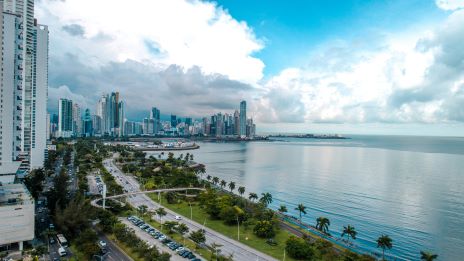
What is the executive process?
In Panama, the so-called “executive process†is a type of judicial procedure that is used to enforce an obligation that is supported by an executive title. In accordance with the provisions of article 1612 of the Judicial Code of Panama (CJP), compliance with clear and enforceable obligations that are recorded in written documents that come from the debtor or his deceased and constitute full evidence against him, or those that emanate from a sentence of conviction issued by a judge or court of any jurisdiction or from another judicial resolution that has executive force in accordance with the law.
Pursuant to article 1613 of the CJP, the following documents “provide executive merit,†which means that they constitute full evidence for the initiation and filing of an executive process:
- The executory sentences of convictions and the executory resolutions that approve a search, agreement or agreement;
- The sentences of arbitrators and arbitrators;
- Any judicial action from which it appears that a person is obliged to pay an amount, deliver, do or stop doing something;
- Public writings;
- Private documents of any kind, provided that the debtor has acknowledged his signature before the judge or has been declared confessed or has presented the document to a notary for certification or notarization or has died and the heirs recognize the signature;
- Without prejudice to the provisions of special laws, rental fees whose liquidity is proven by unpaid receipts, together with the respective rental contract registered in the competent official office, or that meets any of the requirements set forth in the previous ordinal;
- The document stating credits against the owner of the cargo in accordance with the Commercial Code;
- The document that records, against the owner of the ship, credits in accordance with the Commercial Code;
- The document in which credits are recorded against the owner of the freight in accordance with the Commercial Code;
- Checks rejected by the bank against which it was drawn, due to insufficient funds or because the drawer does not have an account in the bank;
- Negotiable documents against the drawers, grantors, acceptors, endorsers, guarantors and other parties involved in them;
- Bonds and their coupons;
- The credit for common expenses of buildings subject to the horizontal property regime, as provided in the law;
- Any other Title that the law attributes executive force to it;
- The certifications issued by banks, savings banks and savings and loan associations, duly authorized to operate their economic activities in accordance with the law, in which said entities record the credit balances that their accounting books show against the defendant, always that such certifications be certified by an authorized public accountant;
- The document containing a joint surety, even if it does not express a liquid amount, provided that said document meets the requirements set forth in section 5 of this Article and the surety agrees to an obligation documented in a Title that, in itself, provides merit. executive;
- The certifications issued by the issuer or its representative in relation to the rights that a person has over securities represented by book entries, and those issued by an intermediary in relation to the stock market rights that it has recognized over financial assets in custody accounts. ; and,
- The account statement or unpaid receipts for common or extraordinary fees and/or expenses that a co-owner must pay.
The executive process begins by filing a lawsuit before the competent court or tribunal. The complaint must contain, among other things, the following information:
- Identification of the creditor and the debtor
- The nature of the obligation
- The amount of the obligation
- The executive title that supports the obligation
The judge or court, if it finds that the claim meets the legal requirements, will issue an Executive Order, which will order the debtor to pay the obligation and will provide a specific deadline to do so. If the debtor does not pay the obligation within the established period, the creditor may request the seizure of his assets.
We warn that against the Payment Order, the executed person may only file the exceptions of payment, res judicata and prescription.
The executive process is the fastest and most effective procedure that can be filed to enforce an obligation. However, it is important to keep in mind that the creditor must have a valid executive title to be able to successfully carry out this type of procedure.
Types of executive processes:
- Simple executive process: This is the most common type of executive process. It is used to enforce obligations to give, do or not to do.
- Mortgage foreclosure process: Used to enforce obligations secured with mortgages.
- Pledge enforcement process: Used to enforce obligations secured with pledges.
Procedure of an executive process:
- Presentation of the claim
- Issuance of the Executive Order
- Notification of the Executive Order to the debtor
- Seizure of the debtor’s assets (in case the debtor does not pay the obligation)
- Judicial sale of seized assets, in order to achieve payment of the obligation.
In accordance with article 1623 of the Judicial Code of Panama, the Executive Order must contain the following:
- The designation, by name and surname, of the executing creditor, the executed debtor and the possessor of the thing, when this is necessary because it is a real action;
- The order to comply with the obligation in question, sufficiently specified, and to pay the costs that will be provisionally assessed by the judge; and
- The debtor’s warning that he must appear in court within two days following notification of the Executive Order to pay or report assets for payment, that failure to declare assets will be punished as contempt, and that false statements will give rise to to the corresponding criminal liability, for which the judge will send a copy of the action to the respective agent of the Public Ministry.
Notification of the Executive Order:
According to the provisions of Article 1641 of the Judicial Code of Panama, the Executive Order will be personally notified to the debtor, his representative or his attorney, letting him know by means of a procedure in which the corresponding notification will be recorded.
There are two types of measures that can be filed to ensure the results of an executive process in Panama, namely:1. Seizure of movable or immovable property (in the event that it is not mortgaged in favor of the plaintiff):
Sequestration is a legal order that requires a third party, such as an employer or a bank, to retain the money owed from the debtor and make it available to the Judge hearing the process. When it involves real estate, the judge will order the Public Registry to place a marginal on the seized property, in order to remove it from commerce.
2. Seizure of movable or immovable property:
A garnishment is a legal order that freezes a debtor’s assets until their debt is settled. This type of measure can be directed against movable and immovable property, owned by the debtor.
Once the Executive Order has been duly notified, the proposed exceptions and/or incidents have been resolved, and there is no prior request awaiting its ruling, the plaintiff may request the auction or judicial sale of the movable property and/or properties that have been seized and are in safe custody of the court.
How the judicial auction proceeds.
The court responsible for the process will issue a notice that will express the day on which the auction will take place, the assets to be sold, the appraisal and the amount that will serve as the basis for the auction. The real estate will be determined by its location, boundaries, and other circumstances that make it known precisely and, if it is registered in the Public Registry, the pertinent data will be indicated. Movable property will be determined in the advertisements, making them known with the greatest clarity and precision possible.
The auction notice or announcement must be published in a newspaper of national circulation for 3 consecutive days and said publications must be contributed to the file along with the secretarial certifications of all the courts that are located in the circuit or township where the property is located. property that will be auctioned.
Once the day of the auction is held, everyone interested in the auction must submit, for their position to be admissible, 10% of the amount indicated as the basis for the auction of the good or goods that they intend to auction. Both the creditor and the intervening third party are skilled bidders to make bids for your credit. The performer and the intervening third party do not need to make a deposit, except when their credit represents less than the basis of the auction. In this case, they must enter ten percent (10%) of the difference between their credit and the basis of the auction, in accordance with the provisions of article 1715 of the Judicial Code of Panama.
Once the assets have been auctioned, the official will issue a document stating the date of the auction, the assets auctioned, the name of the auctioneer, the sum for which each asset was auctioned and the name of the person. to which the auctioned assets are awarded. This diligence will be signed by the judge and the clerk of the court or the executing bailiff, as the case may be, and the auctioneer. The copy of this diligence will constitute title of ownership in favor of the acquirer.
In executive trials, the courts must order, in the Order approving the auction, that the registration of the embargo on the auctioned property be canceled and that it be registered in the name of the person who acquired it through the judicial sale. If the property is mortgaged, the cancellation of the mortgage on it will also be ordered.
Against the resolution that puts an end to or definitively awards the auctioned assets to the bidder who won the auction, an extraordinary appeal is possible, in the event that one of the parties feels aggrieved and considers that their right has been violated. The above must be reviewed by the judge and, if said appeal is viable, it will be admitted and the file of the process will be sent with all its support to the Superior Court to resolve the appeal. If neither party announces and supports an appeal, it is considered that the process has come to an end and the file will be closed, archived and removed.
Bibliography:
- Article 1612 of the Judicial Code of Panama,
- Article 1613 of the Judicial Code of Panama,
- Title XIV, Execution processes, chapters I, Section 2, Section 3, Section 4, Section 7, Section 8, Section 9, Section 10.
- Article 1623 Panama Judicial Code,
- Article 1641 of the Judicial Code of Panama,
- Article 1682 of the Judicial Code of Panama,
- Article 1700 of the Judicial Code of Panama,
- Article 1709 of the Judicial Code of Panama,
- Article 1715 of the Judicial Code of Panama
The information provided by ARIAS® is presented for informational purposes only. This information is not legal advice and is not intended to create, nor does it constitute, an attorney-client relationship. Readers should not act based on this information without seeking advice from professionals in the field.



